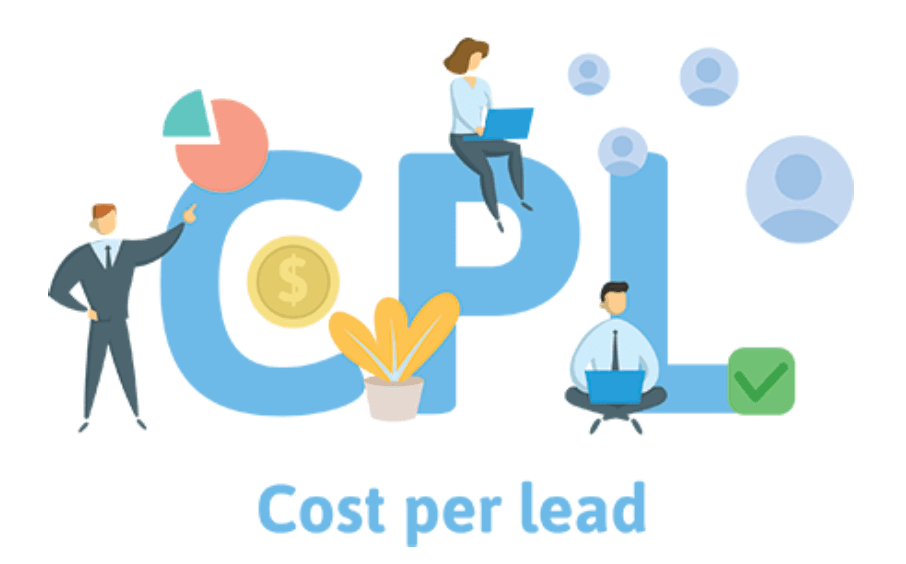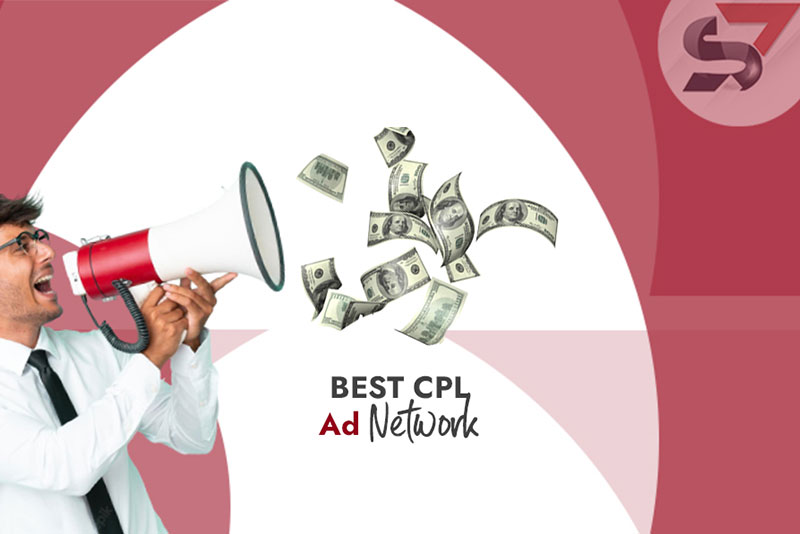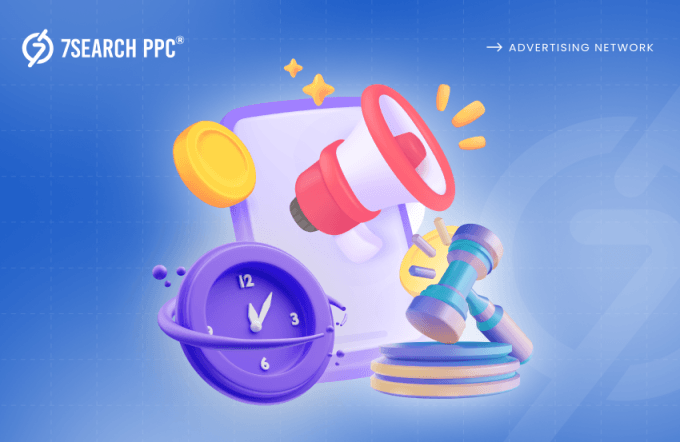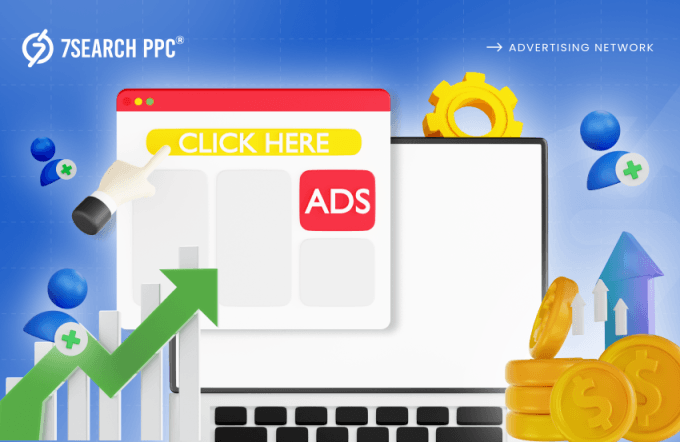Many advertising and marketing companies play a significant role in finding new clients and customers for your business and services. Still, it is challenging to know how these Cost Per Lead campaigns work effectively.
Please remember that if you are attracting new customers but paying more than they are worth in ad spending, your company could have a wholly unsustainable future.
It’s essential to recognize how cost-effective your advertising campaigns are when you conduct one to expand your company and increase your product sales.
Many digital marketing experts say Cost Per Lead is one of the best and most robust solutions in marketing strategies to measure and optimize your sales. Cost Per Lead is a metric that will tell you whether your efforts and marketing spends are paying off.
A successful entire lead generation campaign is a very effective way to grow your sales and services. In this article, We will take in-depth information about Cost Per Lead.
You also learn What it is and how to manage your boost business. Once you activate tracking your Cost Per Lead, you can build more compelling marketing campaigns and attract more leads for less money.
What is the Cost Per Lead?
Before applying Cost per Lead, ensure that you should define what a lead is for what is present, and what is for your business. Most businesses determine a lead as a person or organization interested in a company’s products or services.
They express their contact details (i.e., email, phone numbers, social accounts) In exchange for an offer, test, or more information about your product and services.
In digital marketing campaigns, when you run a campaign for your sales or paid services, there may not be many visitors to purchase the product and services, but your click payment is deducted.
Suppose when you save these costs, Cost Per Lead (CPL) is defined as the amount spent to generate a new lead for your business. Cost Per Lead pays on the purchase made from the ads run by you, and you get per customer for Molly.
If you find the Actual Cost Per Lead meaning for a run ad campaign. We will tell you that Cost Per Lead is used to assess and track the efficiency of marketing efforts. The goal is to deliver a firm cash amount to your marketing team, so you know how much money to spend on generating new leads.
The Cost Per Lead statistic also gives valuable information for calculating the return on marketing investment. The individual stage of the buying funnel should be coupled with identical KPIs, such as cost per visitor. Similarly, you may use similar data to track particular campaigns, such as banner advertisements, AdWords, social ads, or your whole marketing strategy.
The Importance of Cost Per Lead
While you are already doing great work in marketing your product sales and generating leads, you should take the time to calculate the Cost Per Lead helps to provide you with meaningful insight into how your business is doing work.
If you equate cost per lead and cost per click in a digital ad campaign, then you are wrong. Because that is to say, both campaigns are the same. Lets we are telling you clearly, that the only difference between the cost per lead vs cost per click is that in a CPC ad campaign, you have to pay on clicks, and in a Cost Per Lead ad campaign, you have to pay for the lead. It happens. Lead marketing, buying like a lead.
Cost Per Lead is variable when it comes to understanding the effectiveness of your digital marketing strategies. It is an excellent indicator of what is working and what is not, helping you choose to focus your efforts in the future.
If you ignore your Cost Per Lead, You are taking a blind guess as to how effective your marketing is, likely dropping money into ineffective methods or ignoring the ones performing well.
The way you glean these performance-based understandings is relatively straightforward. If your email or newsletter has a Cost Per Lead that is much higher than other marketing methods, you might want to look further into its results to see if it is a worthwhile investment in the future.
When your Ad campaigns have the lowest Cost Per Lead of all your marketing strategies, You are likely to prioritize similar ads in your marketing budget.
How to Calculate Cost Per Lead?
When you calculate cost per Lead and want to know how affordable the leads are executing correctly, you need the CPC formula for this process. You need to split the amount of money spent on a campaign during a specified period by the number of leads acquired through that campaign at the same time.
Cost Per Lead Formula:
CPL = Total Charge of the campaign / The number of Leads generated
For example:
Your marketing campaign in the month of March cost you $2,500, and you managed to generate 250 leads during the same month. The month goes like this: CPC = $2,500/125 = $20.
It means your average CPC is $20.

Cost Per Lead is one of the more simple, more effective metrics to measure the efficiency of your marketing efforts. Lead generation is one of the most central focuses of marketing and the lifeblood of successful sales.
You can also calculate different CPC metrics for different campaign platforms, such as email, social media, and search engines. It helps you to decide where to focus marketing efforts, as the channel you choose can significantly affect your overall customer acquisition cost.
Cost Per Lead is often combined with similar metrics known as cost per acquisition (CPA). The average cost to convert a customer into a customer from a given marketing campaign.
What is a Good Cost Per Lead?
There is no certainty and no such statistics currently available that any business can refer to as a reference point for optimum marketing campaign efficiency. Your ideal CPC will vary based on several factors, such as your industry, competitive landscape, target audience, company size, annual revenue marketing budget, and the cost of your offering.
Cost Per Lead also fluctuates based on the channels you use for your marketing efforts. Leads generated through attending trade shows will not cost as much as those you capture through email marketing.
If you are figuring out that reasonable cost per lead essentially equals knowing and feeling. If your Cost Per Lead for a given channel is much higher than what that lead converts, you might want to reevaluate whether that strategy is worth it.
When you want to strengthen or better understand your lead generation efforts, you must realize that the Cost Per Lead must be appropriately calculated. The marketing campaigns you run will be lean, efficient, and productive. So You know you are getting there. Remember, your CPC begins with determining and analyzing it.
Average Cost Per Lead
When you know the average per lead, you have to understand that the average cost per lead varies depending on your industry, lead generation networks, company size, and company revenue.
The Cost Per Lead varies widely depending on:
- The Company
- The Profoundness of your target customers.
- The Competition in your sector.
If it comes to the amount and the cost influencing factors, it is better to explore them!
Average Cost Per Lead By Industry
If your business changes, the average Cost Per Lead becomes revenue, and you belong to the industry.
Below we have obtained the industry and CPC on average:
- Non-Profits: $31
- Retail: $34
- Telecom: $45
- Education: $55
- Marketing: $99
- Travel and Tourism: $106
- Manufacturing: $136
- Business Service: $132
- Consumer Products: $105
- Finance: $160
- Healthcare $162
- Technology: $208
Average Cost Per Lead by Lead Generation Channel
A lead generation channel is a means to reach more customers; here, you will see its average cost per lead generation channel.
Online Retargeting: $31
Search Engine Optimization (SEO): $31
Email Marketing: $53
Display Advertising: 463
Social Media Advertising: $58
Referrals: $73
Webinars: $72
LinkedIn Advertising: $75
Search Engine Advertising: $110
Content Marketing: $92
Public Relations: $294
Video Marketing: $174
Traditional Marketing, such as TV, radio, and Print media.
Event and Tradeshows: $811
Average Cost Per Lead by Company Size
The company size is a determining factor in generated leads, and rates inevitably change. Keep reading to know the cost per lead on average as per the size of the company:
1001+ Employees: $349
201 to 1001 Employees: $212
51 to 200 Employees: $180
2 to 50 Employees $47
Average Cost per Lead by Company Revenue
When Cost Per Lead runs ad campaigns, the average CPC used by company revenue is shown below:
500M+: $429
10M to 500M: $179
1M+ to 10M: $185
1M: $166
Measuring and managing Cost per Lead
The Precise methods to effectively manage your Cost Per Lead will depend on each channel. Each is different and requires different techniques to help you find the most optimum cost.
However, some available methods apply to the majority of channels. Here, we will explore it:
Identify Your Target Audience Accurately
You may realize your marketing campaign is not attracting as many leads as you like. It offers your business a high Cost Per Lead. So, you should do to improve it. You should check in on your target audience.
You may not see results with an extensive target audience because you are not getting specific enough with your marketing campaign. You should zero (0) in on the people you want to reach to see better results.
For example, When you run a clothing business that sells men’s, women’s, and kids’ clothes. You would want to file in one group and create multiple subgroups with similar characteristics.
You can base this information on demographics, and socioeconomic status, amongst other criteria. Then, you create ads and campaigns that demand precisely those groups. This makes sure that you won’t total money trying to reach leads that are not interested.
Audience targeting is strongly beneficial to any campaign. It allows you to have the right message to the right people at the right time. You can create a more efficient ad campaign for your business because your ad content will appeal more to your audience.
Focus on generating relevant content
If you want to force conversions, you must deliver content that aligns with your audience’s interests. Relevance is probably the most vital concept in digital marketing, especially Google ads. A fragment of content is considered relevant when two things meet:
You have the correct target audience
This means that you are targeting people who could have a demand for your product and services. For instance, targeting first-year trainees with an ad campaign for luxury homes is likely not relevant to them. However, a matter with ads for baby food is much more assessed.
Your content transmits the right message to your target
Your content needs to be clear, straightforward, and include the answer to the question. For example, why do I need to buy your product, and how will it benefit me?
More users will click on it when your content reaches the people who could be interested in it with the right messages. Your click will be cheaper; as a result, you will reduce your cost per lead.
Spend Time and Money on High-Performing Keywords
When you plan to run an ad campaign with relevance in mind, it’s more important to use relevant keywords which bring your products to the public. As a digital marketer, you must keep searching for keywords and analyze their performance.
You should remove that keyword, which will not be working. You tag and optimize your ad campaign, which has proven to drive conversion.
Please keep in mind: that every keyword has the potential to be transformed into something at some point. However, you can try to switch to more targeted long-tail keywords. Although you may get fewer clicks, people who click on that ad will probably convert at a higher rate.
Do Retargeting audience
Retargeting is an excellent method for getting leads. Sometimes users see your ads and get interested, but they do not act. A retargeted ad can help convert them into a customer.
These ads often price very little to run and are effective. When people see retargeted ads, they think about buying your products or using your services again. Retargeted ads help your business purpose more conversions so that you can lower your Cost Per Lead.
Perform A/B Tests
When you are running one ad at a time, you can not compare, analyze and know from the result. So, running ads is always better to run at least two versions side-by-side so you can do A/B testing.
In keeping with the scientific method, you can use one ad as a control and the other as a variable. You should ensure that each ad is shown the same number of times so that you can run it indefinitely.
The ad that Converts more leads and lowers your Cost Per Lead is the ad campaign winner.
Do A Historical Review
If you have been running your ad campaign for a few months, you have probably gathered enough historical data to conduct a performance review. Typically, each ad network has an Analytics section that provides the necessary data showing the conversation’s location.
Analytics is also a great way to refine your target and better understand your audience. When you do historical reviews on a regular basis, it is profitable for you to do so.
Conclusion
Cost Per Lead is a metric that is individual to everyone, so any average numbers might not apply to you. Every CPC journey is different, but you do not have to worry if yours are higher than the average. You should keep optimizing, and you will get there if you have any concerns or content with the best digital marketing expert or digital marketing agency.



















